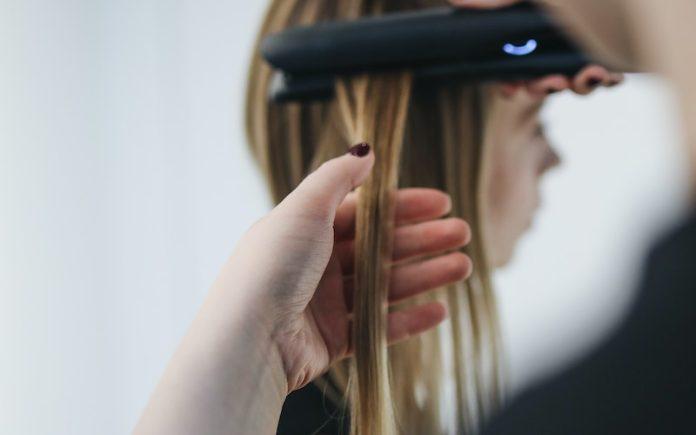Common Hair Problems and Solutions: Navigating Your Way to Healthy Locks
Your hair is a significant part of your overall appearance, and it plays a crucial role in your self-esteem and confidence. However, it’s not uncommon to face various hair problems that can leave you feeling frustrated and self-conscious. The good news is that most hair issues have solutions, and by understanding the underlying causes and adopting the right strategies, you can overcome them. In this comprehensive guide, we will explore some of the most common hair problems people encounter and provide effective solutions to help you achieve and maintain healthy, beautiful locks. Whether you’re dealing with hair loss, dandruff, split ends, or other issues, this guide will empower you with the knowledge and tips needed to address these concerns head-on. Let’s dive into the world of common hair problems and discover practical solutions to restore and rejuvenate your hair.
Common Hair Problems and Solutions
Hair Loss and Thinning:
Hair loss and thinning are widespread concerns that can be caused by factors such as genetics, hormonal changes, stress, and improper hair care.
Consider treatments like minoxidil, finasteride, or hair transplant surgery for more severe cases. Implement stress management techniques, maintain a balanced diet, and use gentle hair care practices to prevent further hair loss.
Dandruff:
Dandruff is characterized by itchy, flaky scalp and can be caused by various factors, including dry skin, fungal overgrowth, or sensitivity to hair care products.
Use anti-dandruff shampoos containing ingredients like zinc pyrithione, ketoconazole, or selenium sulfide. Maintain scalp hygiene, avoid hot water for hair wash, and consider natural remedies like tea tree oil or aloe vera.
Split Ends:
Split ends occur when the hair shaft splits into two or more strands, leading to frizzy and damaged hair.
Trim your hair regularly to remove split ends. Use leave-in conditioners and oils to moisturize and protect your hair from further damage. Avoid excessive heat styling and chemical treatments.
Dry and Frizzy Hair:
Dry and frizzy hair is often the result of dehydration, excessive heat styling, or using harsh hair care products.
Hydrate your hair by using deep conditioning treatments and hair masks. Reduce heat styling and opt for heat protectant sprays when necessary. Use sulfate-free, moisturizing shampoos and conditioners.
Greasy Hair:
Greasy hair occurs when the scalp produces excess sebum, making the hair look oily and weighed down.
Use a gentle, sulfate-free shampoo that is designed for oily hair. Avoid overwashing, as it can strip the scalp of essential oils and lead to increased oil production. Use a dry shampoo between washes to absorb excess oil.
Thin or Fine Hair:
Thin or fine hair can lack volume and appear flat.
Use volumizing shampoos and conditioners. Experiment with layered hairstyles to add dimension and volume. Avoid heavy hair care products and heat styling that can weigh down your hair.
Color-Damaged Hair:
Coloring, bleaching, or using chemical treatments can damage hair, leading to dryness, breakage, and loss of color vibrancy.
Use sulfate-free, color-safe shampoos and conditioners. Limit chemical treatments, and if possible, opt for less damaging alternatives like hair glosses or semi-permanent dyes. Deep condition regularly to restore moisture and shine.
Hair That Lacks Shine:
Dull, lackluster hair can result from product buildup, environmental factors, or nutrient deficiencies.
Clarify your hair occasionally to remove product buildup. Maintain a healthy diet rich in vitamins and minerals. Use shine-enhancing products or natural remedies like apple cider vinegar rinses to boost shine.
Scalp Irritation:
Scalp irritation can be caused by factors such as dryness, allergic reactions, or dermatological conditions.
Use gentle, fragrance-free hair care products if you have a sensitive scalp. Avoid scratching, and consult a dermatologist if you experience persistent scalp issues.
Preventive Hair Care Tips
In addition to addressing specific hair problems, adopting preventive measures can help maintain the health and beauty of your hair:
- Regular Trims: Trim your hair every 6-8 weeks to prevent split ends and promote overall hair health.
- Balanced Diet: Consume a diet rich in protein, vitamins, minerals, and healthy fats to nourish your hair from the inside.
- Gentle Hair Care: Use sulfate-free shampoos and conditioners, avoid excessive heat styling, and be gentle when detangling wet hair to prevent damage.
- Scalp Care: Pay attention to your scalp’s health by keeping it clean, moisturized, and free from irritation.
- Stress Management: Practice stress-reduction techniques like meditation, yoga, or deep breathing exercises to minimize the impact of stress on your hair.
- Olaplex hair loss trusted remedies are by professionals and consumers alike.
Conclusion
Common hair problems can be frustrating, but they are not insurmountable. With the right knowledge and a tailored approach, you can address these issues effectively and enjoy healthy, beautiful locks. Remember that hair care is not one-size-fits-all; it depends on your hair type, lifestyle, and individual needs. By implementing the solutions discussed in this guide and adopting preventive measures, you can maintain vibrant and luscious hair that boosts your confidence and complements your overall appearance. Embrace these tips, and let your hair shine with health and vitality.
